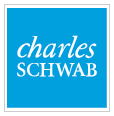Another Surprising Year
Despite worrisome headwinds (namely Covid and inflation), the markets boasted another good year in 2021. The continued presence of Covid in new variant forms delayed the economic return to normal across the globe. The snarled supply chains and continual accommodative monetary policy pushed inflation to highs not seen in decades. Described by so many as only “transitory,” inflation has become the No. 1 concern for Americans. So much so, the Fed was finally forced to cry uncle and drop the transitory description. Shooting up to 6.8%, we are all feeling the inflationary effects. Inflation is harmful because it reduces our real purchasing power and standard of living. Left unchecked, it destroys societies. It is often a tempting tool for the government because it creates a false sense of prosperity. The siren call then tempts policymakers to let it run, even though they know there’s a dark price to be paid. “There’s no such thing as a free lunch.” Inflation creates economic contractions, whether through the normal course of economic adjustments and/or through policy responses to tame it. The actions needed to reduce inflation slow economies down, but if not enacted, inflation becomes uncontrollable and wrecks the economy itself. There is a reckoning either way. It is true that inflation will slow if supply chains can open and as accommodative monetary policy is withdrawn. But the great test for the Fed and for our country is whether we — and our increasingly leveraged economy — can withstand even a little pullback. If not, we are caught in a debt trap where it is damned if we do, damned if we don’t.
Markets and the Economy
Stock returns were powered by strong earnings growth, stock repurchases, and record equity fund flows. According to research firm NDR, the S&P 500 notched 70 record highs in 2021, which was the second most since 1995. Mega-cap names powered the S&P 500 over all other stock indices such as the Dow Jones Industrial Average, Nasdaq, Small-Cap, Mid-cap, International and Emerging Markets. A typical diversified equity allocation will have exposure to all those areas in some form. Value stocks beat growth overall except for Large Cap Growth, which was powered by the Mega-Cap names. Mid and small-cap growth were the poorest performers, with the small-cap growth up only 3% for the year. Emerging Markets were the worst performing stock segment, posting a small loss for the year.
The soaring economy and inflation caused bonds to post losses for the year. Some might say the losses were surprisingly low against the backdrop of high inflation. Perhaps bonds dodged a bullet, but if higher-than-anticipated inflation persists, the reckoning will come. Another irony of a high inflation year was that Gold, a supposed inflation hedge, was down nearly 4% for the year. This was perhaps due to the gaining traction of crypto assets, which are seen as “modern gold.” Bitcoin was up 60% for the year, but it endured a 53% drawdown along the way. Buyer Beware.
Model Portfolio Performance and Positioning
The Managed Income model was up for the quarter and ended the year up 2.57%. While that return might seem small by historical standards, it was significantly better than fixed income alternatives. By comparison, a widely held bond benchmark, the Bloomberg Barclays U.S. Aggregate Bond Index, was down around 1.55% in 2021. Treasury bond indexes didn’t fare any better, averaging about a 2.3% loss for the year. As the Fed has now moved up its timetable for ending QE and raising interest rates, the low yields may slowly begin to rise. The current projections are for three rate increases each in 2022 and 2023. If this holds, then yields on cash-like options would be around 0.75 to 1.00% a year from now, and 1.5 to 2.0% in two years. The latter yield is comparable to the current yield on 10-year Treasury bonds. Our fixed income exposure remains flexible by the use of a laddered approach to minimize the negative price impact of rising interest rates. We continue to have about 60% of our fixed income exposure in short-duration securities so that we can avoid large losses if interest rates move up. The primary objective of Managed Income is to preserve capital on an inflation-adjusted basis with a secondary objective of income. The portfolio is conservative by design and seeks to minimize risks inherent in assets classes such as volatility, credit, interest rate and inflation. The returns will be constrained by the current low interest rate environment, but stretching for yield would entail taking on undue risk and is not warranted in the present conditions.
Among our equity and growth strategies, Fundamental 20 was the best performer for the year and up over 25%. This strategy focuses on highly profitable companies that have excellent value compared to their cash flows. Six new names were added to the strategy in January: Dell Technologies (Computer Hardware), LegalZoom (Internet Content & information), Omnicom Group (Advertising Agency), Atlassian Corporation (Application Software), Victoria’s Secret (Retail Apparel), and US Steel (Steel).
Our Fast Movers strategy was vying for the top spot after November but then got shellacked in December. The main culprit was Moderna (Biotech), which lost about 28% in December — but was still up 143% for the year. The semiconductor holdings such as Nvidia, Advanced Micro Devices, and Xilinx also struggled in December. This strategy had what could be best described as a rotational year after a tremendous 2020. It has still been experiencing a rotation away from some of the best performers of last year’s pandemic economy, which causes the portfolio to churn until a few of its names can catch a big run. The strategy now holds all technology and healthcare names in the biotech, semi-conductor, software, and medical device industries. We added positions in Datadog (Application Software), Fortinet (Infrastructure Software) and Marvel Technology (Semiconductors).
After lagging in the first half of the year, the Liquidity Factor Strategy also had a good quarter — up 10.2% (most of which came in December), putting the strategy up over 23% for the year. This strategy had extremely low turnover for the year and there were no changes to the holdings for this quarter and as of the start of 2022. The primary exposures remain in the Consumer Cyclical and Healthcare sectors. The Relative Strength ETF Strategy was up around 15% for the quarter and is now allocated to Small-Cap and Consumer Staples.
The Top Flight Model Portfolio was up about 20% for the year and continues to be comprised of 25% Fast Movers, 40% Fundamental 20, 20% Liquidity Factor, and 15% ETF RS. Among our overall equity holdings, the top five performers for the fourth quarter were Nvidia, HP, Louisiana Pacific, Applied Materials, and Interactive Brokers. Moderna, MercadoLibre, Biogen, Novavax, and Advanced Micro Devices were the worst detractors.
*All Data in local currency and price only unless specified as total return (TR). Sources: MSCI, Barclays, Commodity Systems, Inc (CSI, YCharts), IDC, Ned Davis Research, Inc., S&P Dow Jones Indices. See Disclosures on page X for information on performance, risks, and benchmarks.
Paragon Model Strategies |
|
|
|
12/31/21 |
||
|
Model Strategy |
|
YTD |
1 Year |
3 Year |
5 Year |
|
|
Top Flight |
|
|
19.72% |
19.72% |
26.33% |
15.81% |
|
Fast Movers |
|
15.82% |
15.82% |
52.01% |
n/a |
|
|
Fundamental 20 |
|
|
25.39% |
25.39% |
24.66% |
n/a |
|
Liquidity Factor |
|
23.33% |
23.33% |
n/a |
n/a |
|
|
Managed Income |
|
2.57% |
2.57% |
4.20% |
2.58% |
|
Asset Class Summary |
|
|
|
12/31/21 |
||
| Asset Class |
|
YTD | 1 Year | 3 Year | 5 Year | |
|
U.S. Stock |
|
|
25.66% |
25.66% |
25.79% |
17.97% |
|
Global Stock Ex U.S. |
|
7.82% |
7.82% |
13.18% |
9.61% |
|
|
U.S. Bond |
|
|
-1.54% |
-1.54% |
4.79% |
3.57% |
|
Global Bond |
|
-4.71% |
-4.71% |
3.59% |
3.36% |
|
|
U.S. Real Estate |
|
38.99% |
38.99% |
19.28% |
12.34% |
|


